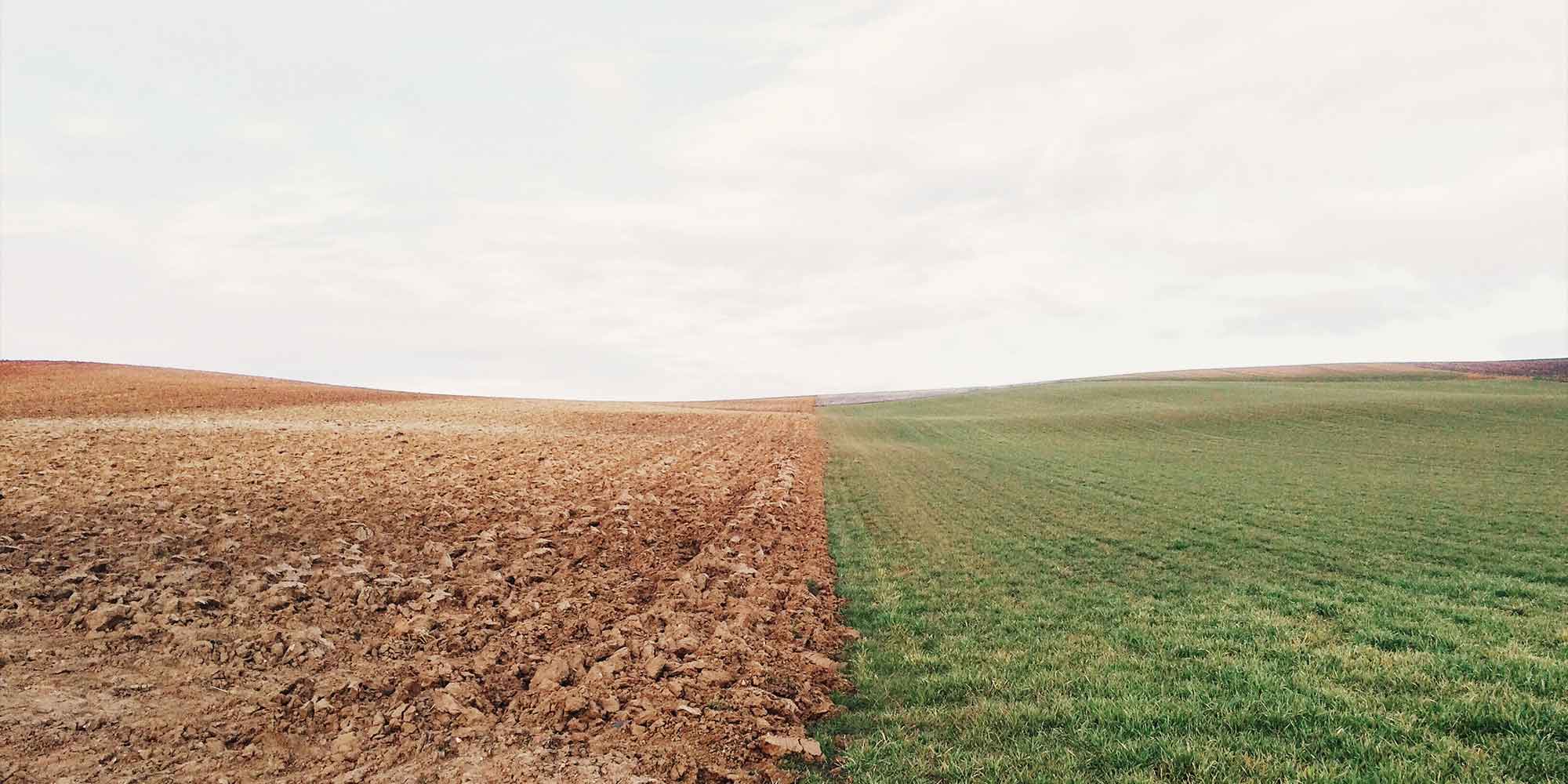This is a classic “good-news-bad-news” scenario. Let’s start with the bad: our planet is dying. Due to carbon emissions released by fossil fuels, water wastage and toxification, and the chemicals that even our own clothing pumps into the environment, Earth has taken a beating, with us being its primary assailants. The good news is that global conversations surrounding climate change and environmental responsibilities are increasing in volume across all political affiliations and age groups (thank you, Greta Thunberg!). But with this increase in knowledge can come a decrease in mental wellness, resulting in a condition known as eco-anxiety.
What is eco-anxiety?
In 2017, eco-anxiety was defined as “the chronic fear of environmental doom.” In the past, this kind of fear was usually relegated to communities that have experienced (or were at risk of experiencing) drought, fatal floods, and other cases of extreme weather. In fact, people who have experienced extreme weather conditions are 50% more likely to suffer from mental health issues such as anxiety and depression. Now that the environment’s deterioration is common knowledge, we’re all feeling the effects. This form of anxiety is sweeping across the globe.
Like your typical generalised anxiety, eco-anxiety can cause feelings of loss, helplessness, and even depression due to the perceived inability to make a real difference in climate change.
Like your typical generalised anxiety, eco-anxiety can cause feelings of loss, helplessness, and even depression due to the perceived inability to make a real difference in climate change. Other symptoms include existential dread, grieving environmental losses (such as animal extinctions and dying reefs), fatalistic thinking, obsessive thoughts, and troubling sleeping. When analyzing worldwide climate perception, American (North, Central, and South), African, and West European populations are currently more concerned with climate change than those in Asian and Middle Eastern countries. In America alone, 70% of the population was worried about climate change in 2018, with 51% feeling helpless. But a significant portion of eco-anxiety sufferers are children and young adults.
70% of 18-24 year olds in the UK were more worried about climate change in 2020 than in 2019, and in 2018, 87% of Australian tweens considered climate change something to be concerned about. In 2020, 57% of American teenagers reported feeling afraid of climate change, with 52% feeling angry—both higher rates than the percentages in American adults. Only 29% felt optimistic. After the UN issued its 12-year-warning stating we only have 12 years to cut back on our emissions or suffer a massive environmental fallout, Millennials, Gen Zs, and our up-and-coming generations are beginning to feel like the world is literally on their shoulders.
Admittedly, 12 years is enough to make anyone feel anxious about the status of our Earth. Given the plethora of issues and emissions that have caused our environment’s deterioration, it’s easy to feel helpless and horrified at our futures. A healthy dose of fear always helps in remaining proactive and vigilant. But, if you believe that you’re suffering from eco-anxiety, here are a few ways you can stay calm in times of uncertainty:
What can you do?

We can’t change the Earth without changing ourselves in the process, so the next time a bout of eco-anxiety overtakes you, turn the lens inward.
Stressing about something you’re not actively working to change is a vicious cycle. Many of us worry about the environment, but we don’t take the steps necessary to reduce our carbon footprint because we’re stuck in our ways. We can’t change the Earth without changing ourselves in the process, so the next time a bout of eco-anxiety overtakes you, turn the lens inward. Of course, anxious thoughts aren’t always logical nor easily controllable, and sometimes we can’t make changes for a myriad of reasons. Still, we should make an effort as far as practicable and possible for us as individuals.
Reduce your footprint
Your first step can be as simple as taking fifteen-minute showers instead of thirty-minute ones (we all do it). Making sure you have a reliable “trash-recycle-compost” system in your home. Cutting back on your meat intake. Buying sustainable clothing, and disposing of unwanted clothing accordingly, whether reselling, refurbishing, or recycling. Even investing in “green” vehicles, such as electric or hybrid, or (dare I say it?) supplementing your car usage with public transportation can help offset some of your footprint. Though you’re a single person, you’ll be able to get some satisfaction knowing you’re doing your part in keeping our Earth’s emissions down.
Help out in your community
Maybe your footprint is in reasonable standing, but it isn’t enough. If that’s the case, joining national and local organizations dedicated to climate awareness might ease the burden. Not only would it allow you to be more involved in the discussion on climate change, but it would also surround you with like-minded people. This offsets some of the negative symptoms present when you’re alone and allows you to share your concerns with others. You don’t have to carry the weight of your anxiety alone.
Many cities and towns have their own organizations, but if you’re looking for an international organization, a couple of good ones are 350, which is helping to fight the fossil fuel industry, Greenpeace, which has connections to the United Nations to campaign against such actions as deforestation and genetic engineering, and Sunrise Movement, a youth organization of over 400 hubs.
Stay informed
This might seem counterproductive, as staying informed may fuel your anxiety, but this is a significant one. It can be challenging to keep thoughts from festering. Hearing about the 12-year-warning could’ve triggered many discomforts a few paragraphs ago. It’s easy for information like this to spiral, leading to assumptions that, as many living with anxiety already know, can seem like factual information. As they say in the mental health and mindfulness communities, “thoughts are not facts.” Staying in-the-know on climate issues will allow you to smother your assumptions with facts and statistics and choose what is worth being concerned about and what is simply a product of your anxiety.
Don’t be afraid to disconnect
This section could be confusing, as staying informed was just highlighted. But just because you’re keeping your ear to the facts doesn’t mean you can’t take a break. When specific issues become very significant and personal in our lives, the thought of placing it on the backburner seems like a betrayal, especially if it’s something as serious as the state of our environment. However, if you find yourself unable to focus on anything else, one of the best things you can do is lay it to rest. Decide on a day, and dedicate it to concentrating on other passions. Choose not to discuss it when spending time with friends. Disconnect from your usual media outlets that might trigger you. Give yourself a break. Feel free to connect the next day or week, if that’s what you wish, but allow yourself some distance, so you don’t overextend yourself.
Engage in nature
Just as you would embrace a friend who’s going through a difficult time, do the same with our environment. Remind yourself why you care so deeply and engage in the natural resources around you. Go for a beautiful hike on a nearby trail. Visit national parks and nature conservatories. Spend a day at the beach and swim in the ocean. Instead of focussing on what we’re losing, try spending this time focussing on what we have. Expressing gratitude is a significant step in a more mindful existence. Increasing the time you spend in nature is a simple way to keep you relaxed and shift some of your mindset to the liveliness of our environment, as opposed to the deterioration.

Meditation and exercise
Any form of anxiety can manifest physically, and eco-anxiety is no different. Between headaches, stomach aches, trouble breathing, and muscle tensions, there’s a variety of ways anxious thoughts can show up in your body. It’s essential to have a set group of tactics in your arsenal, just in case your anxiety gets too painful.
Meditation is a tactic we often hear when discussing mental health and mindfulness, but there’s a good reason for that. Like yoga, meditation is more of a practice than a lighthearted activity, teaching you how to center yourself, focus on your body, and remain present. If you have any form of anxiety, the prospect of needing to stay present seems like a daunting task. Still, meditation, coupled with deep breathing exercises and grounding techniques (i.e. feel your feet on the ground), will allow you to work at your own pace and discover which practices help you release your anxious thoughts. Even 3-5 minute daily meditations are a great first step in easing your anxiety.
If meditation proves to be too stationary for you, developing a regular exercise routine might do the trick! Though exercise is known to increase your heart rate instead of decreasing it, like meditation, getting into your body with intentional breathing and movements will divert your focus from your eco-anxiety and into your actions. Whether you’re jogging around your neighborhood, going on weekly bike rides, or partaking in a workout app, your mind and body will thank you for the endorphins and extra dose of health.
Know when to seek professional help
We would be remiss if we didn’t recommend seeking further assistance if you feel like your eco-anxiety is getting out of control. Though it may seem like a smaller, generational form of anxiety, it can still take a toll on your mental health and well-being, and get in the way of your day-to-day life. Think of it this way: we only know the facts we do because this has become a more extensive psychological phenomenon, so don’t be ashamed to ask for that extra bit of help and guidance, should you need it. You can call numerous mental health lines as a starting point, no matter where you live.
You might be interested in taking your awareness a step further. You’re in luck: Good On You is here to keep you informed on the environmental effects of the apparel industry, and which brands to avoid when wanting to reduce your eco-footprint. Taking steps such as these will allow you to live more intentionally, decreasing the uncertainty you feel surrounding climate change. The more steps we all take, the more we can change the tide and guarantee a healthier Earth by that 12-year mark.
Author bio: Delilah Smith is freelance journalist, storyteller, and sustainable fashion advocate from Oakland, CA. After changing her career path from editorial to film, she balances her position at Pixar Animation Studios with her Good On You contributions, returning back to editorial to spread awareness on the environmental effects of fast fashion, and give readers more eco-conscious choices. When not writing, you can find her on an aerial silk, which everyone should try at least once! You can find her on Instagram @delilah.the.dahlia


















